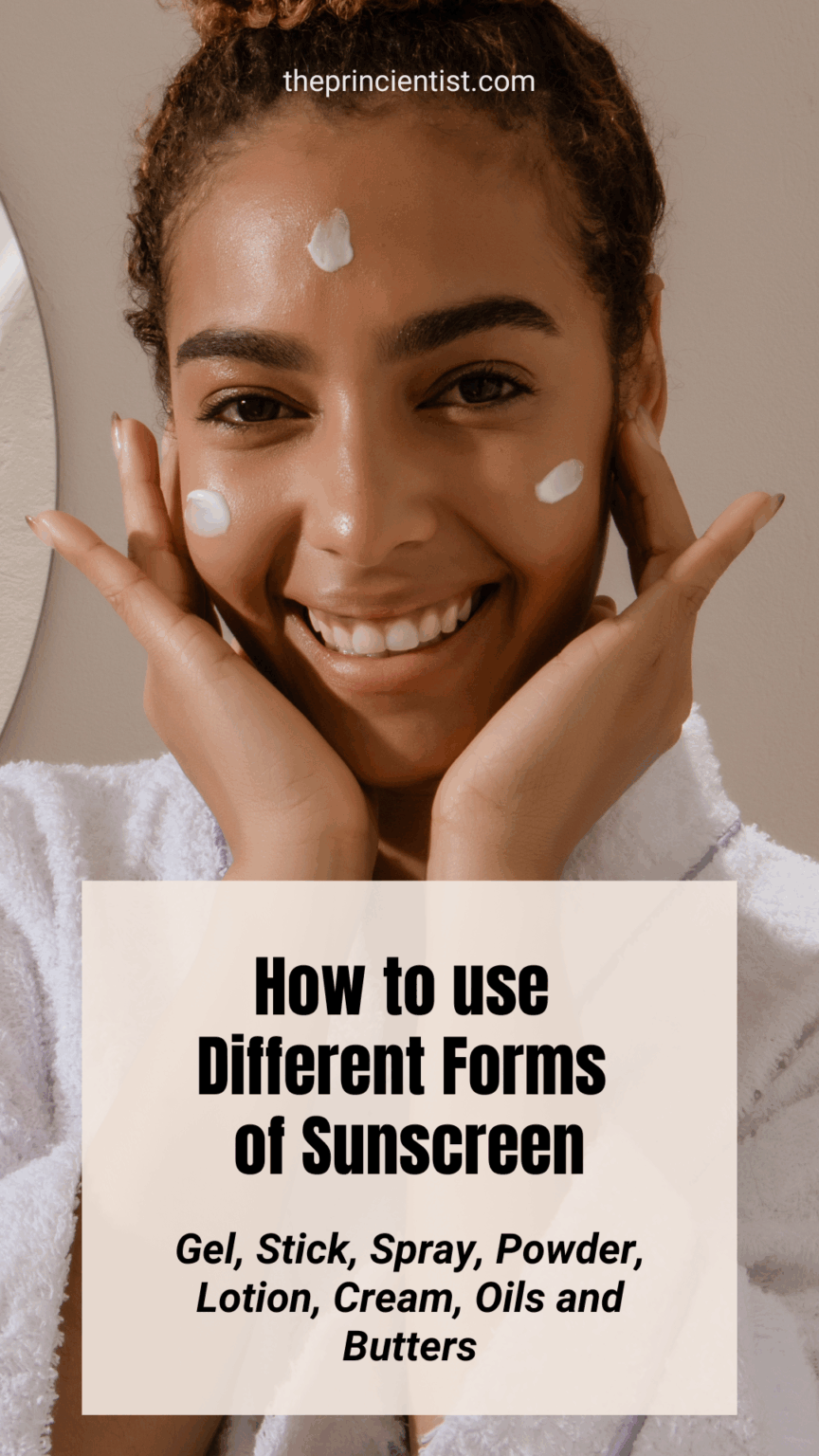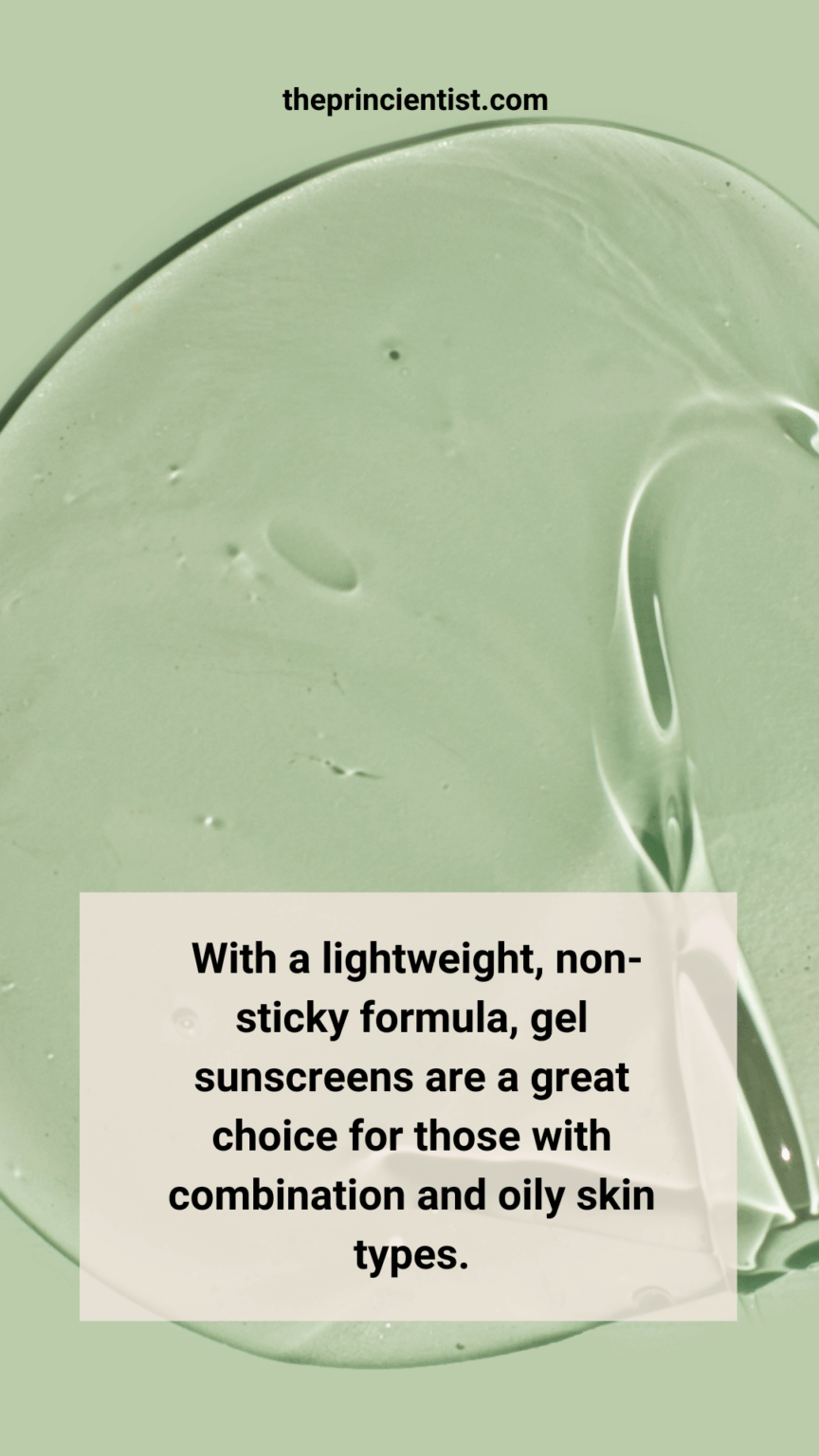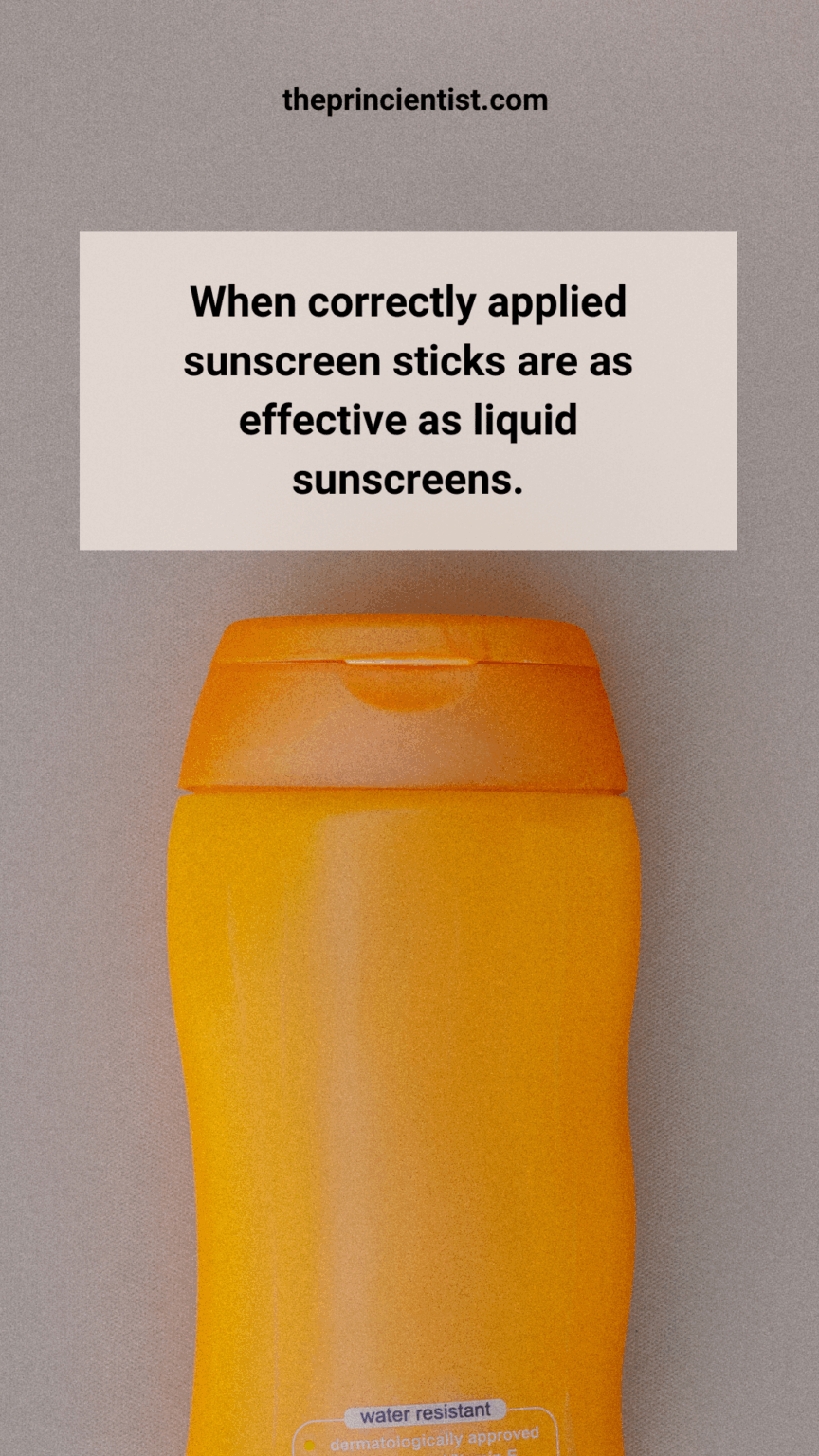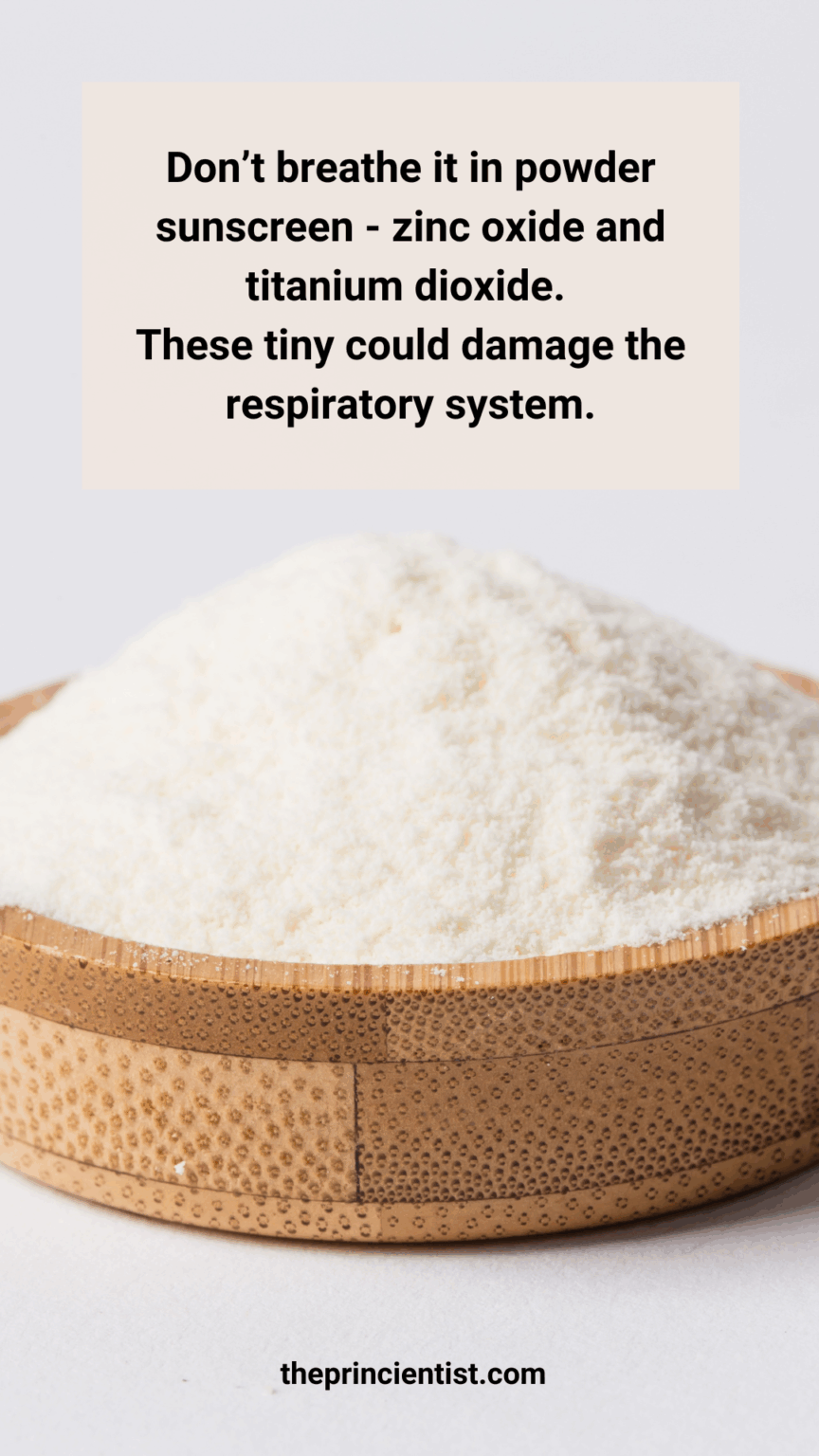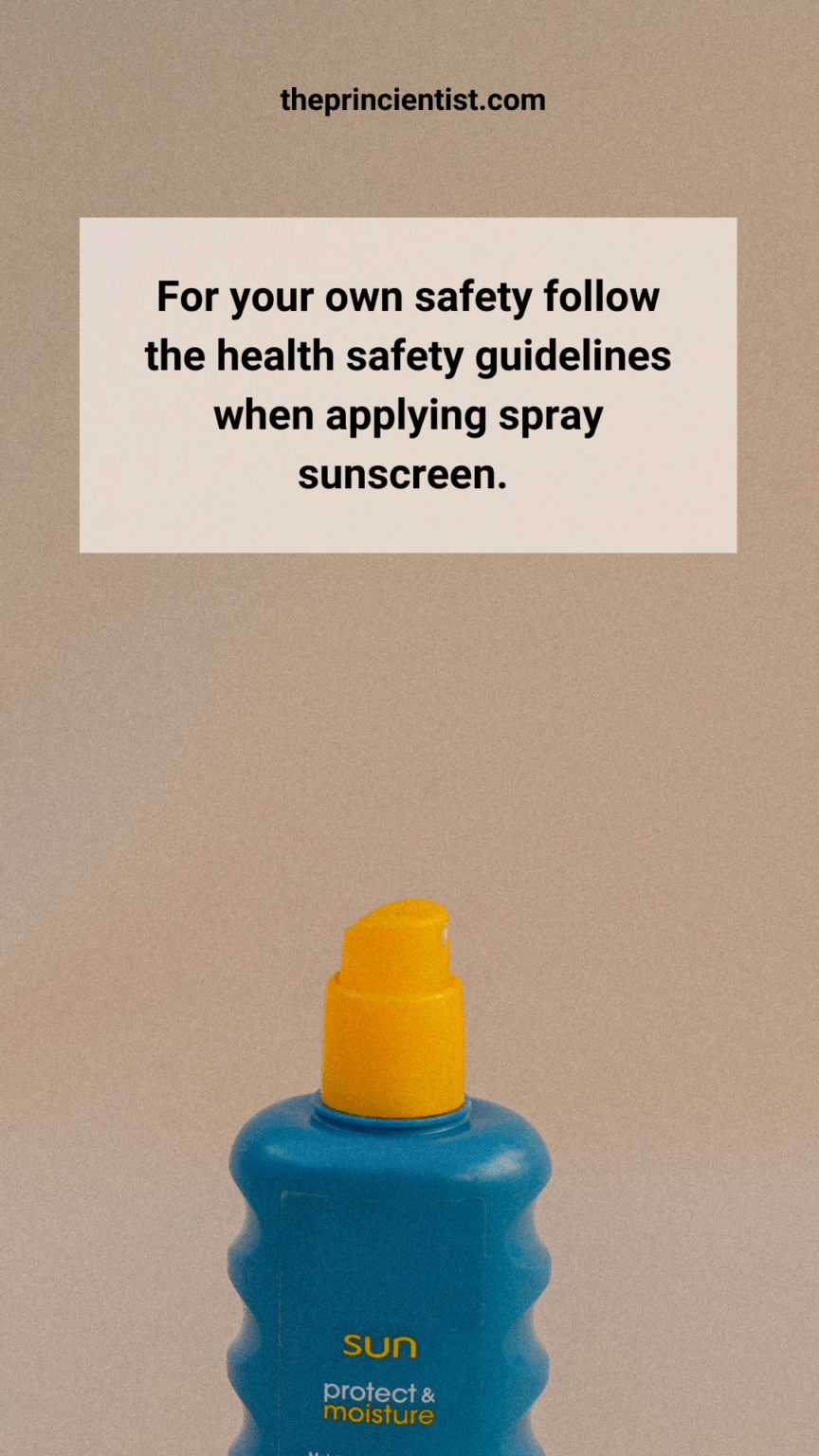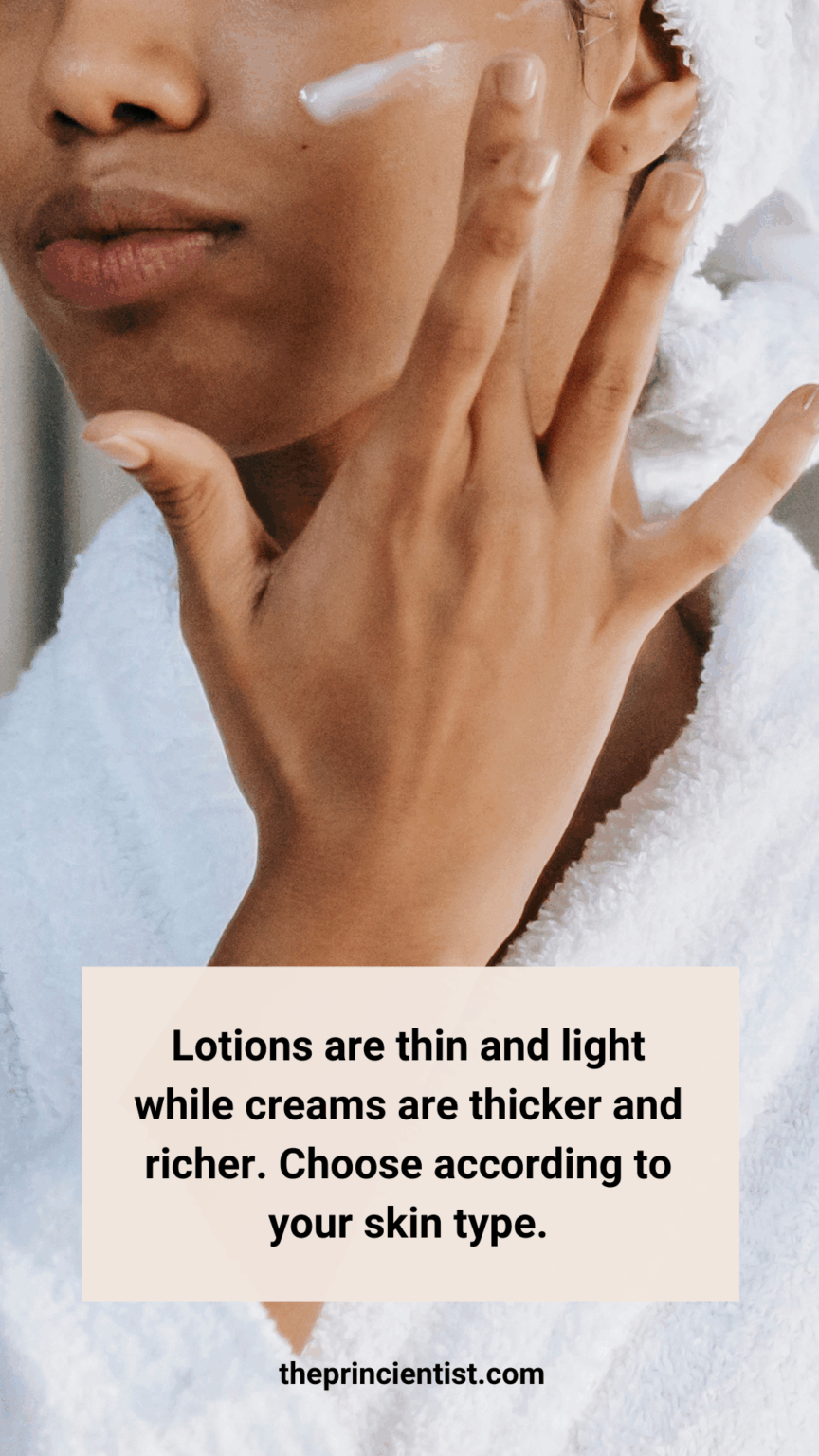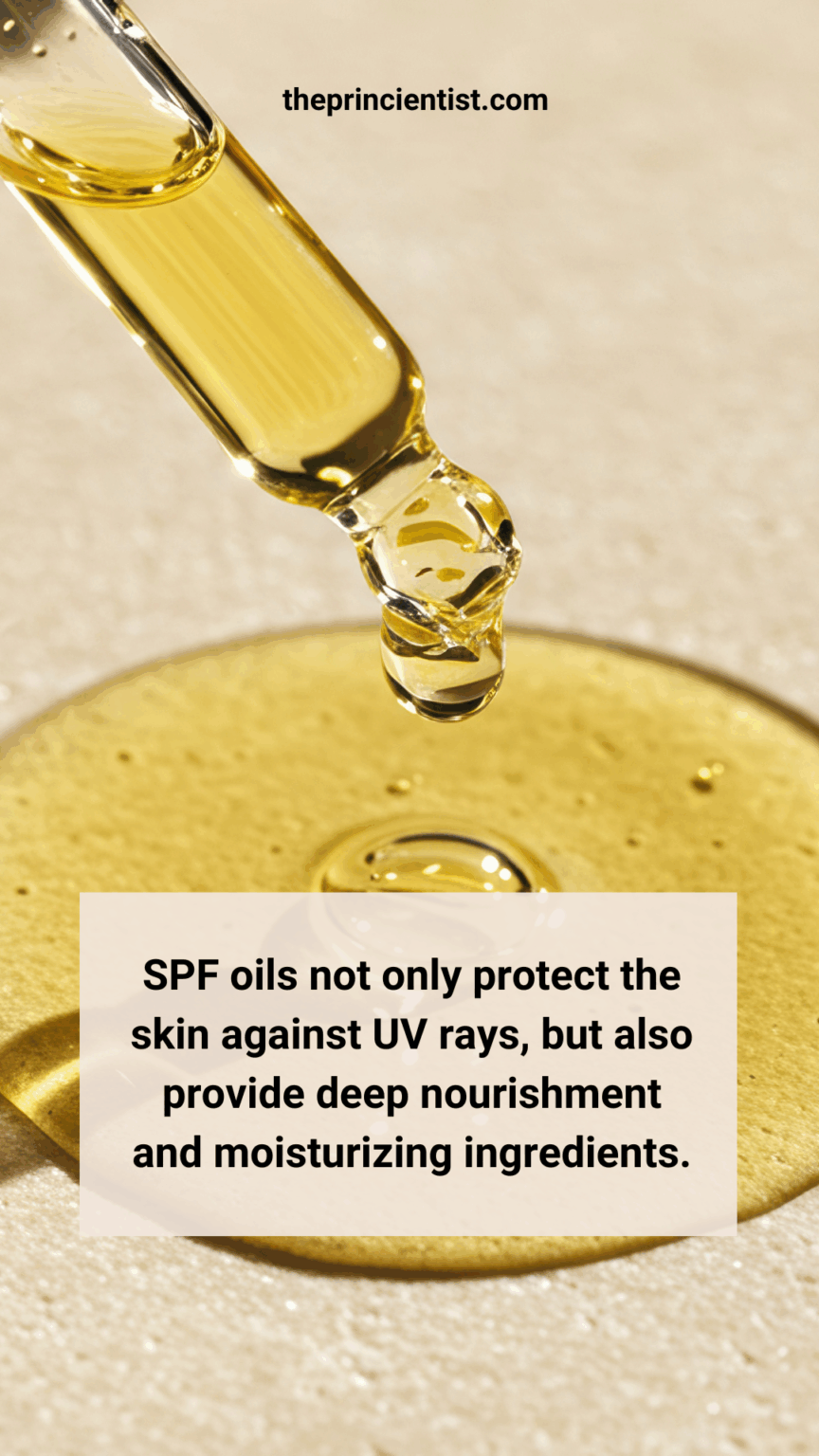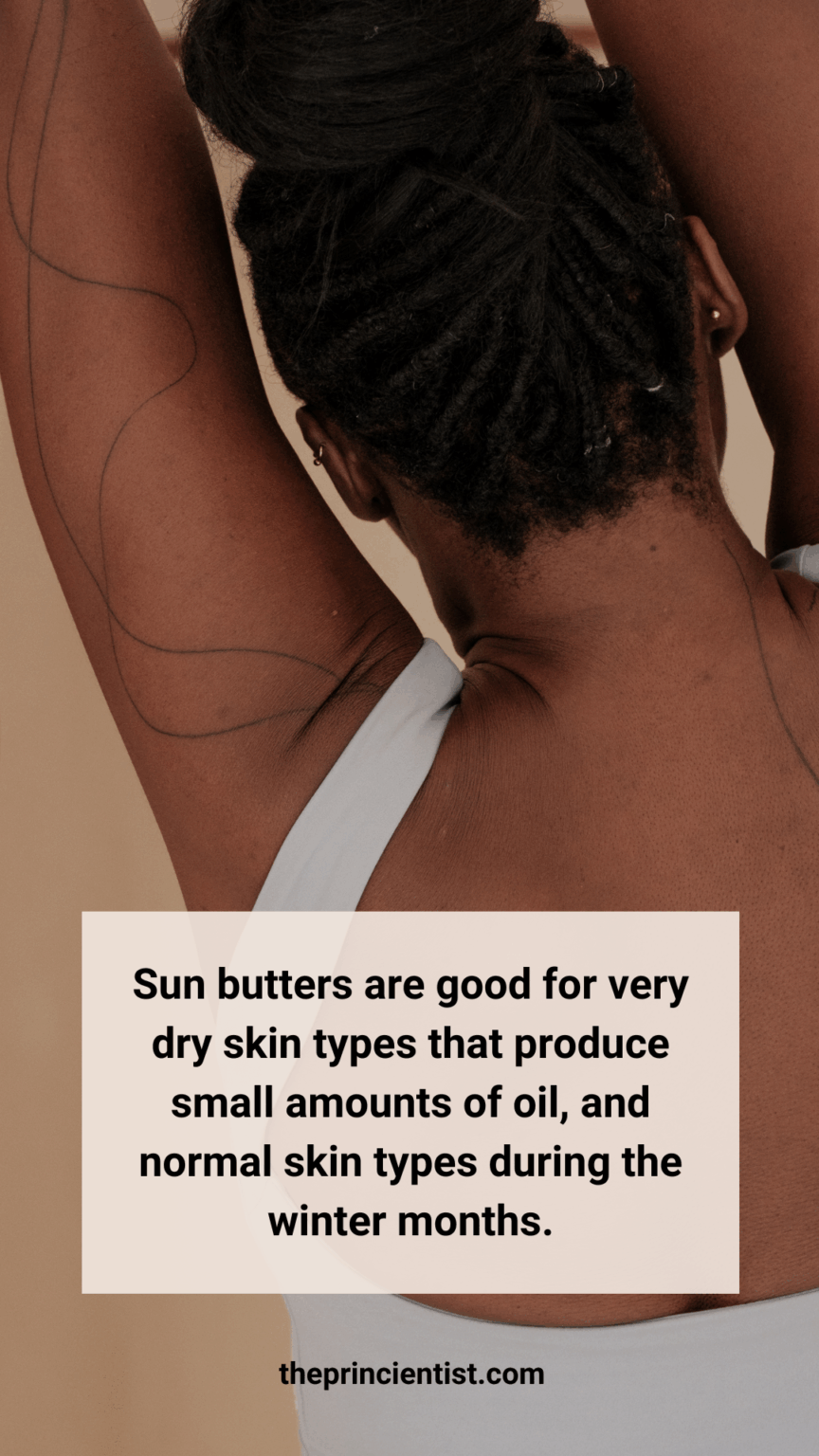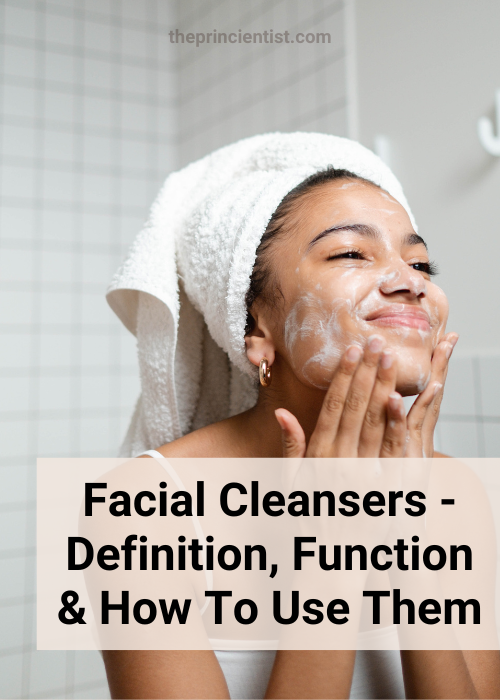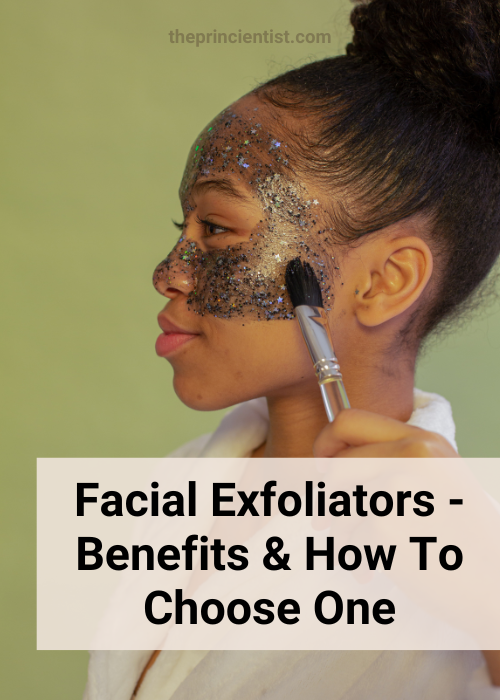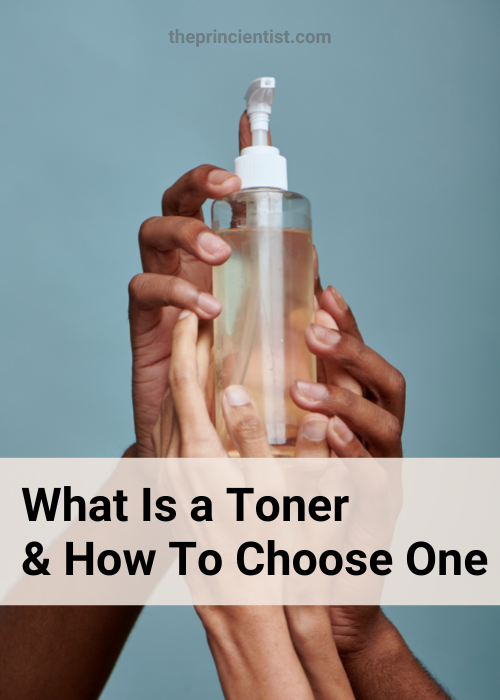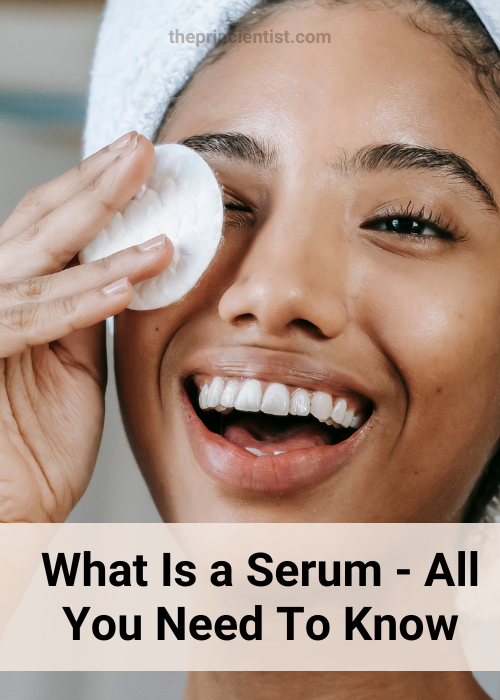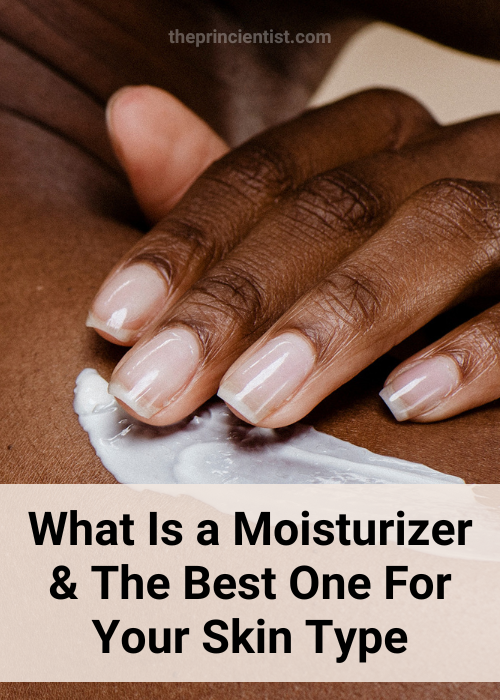Last updated on October 13th, 2025 at 04:43 pm
Choose The Best Sunscreen For You
There are many different forms of sunscreen, including gels, sticks, powders, sprays, lotions, creams, oils and butters.
Each has its advantages, with some being more effective than others.
Make the best choice for your skin.
This post is all about different forms of sunscreen.
Let’s get started.
Gel Sunscreen
Gel sunscreen is a form of chemical sunscreen that protects against UV rays by absorbing them before they cause sun damage to the skin.
This sunscreen is unique because it is a clear, water-based liquid that contains no oil.
The label of this product has water as the first ingredient.
With a lightweight, non-sticky formula, gel sunscreens are great for combination and oily skin types.
Oily skin is skin that produces excess oil.
Using creams, lotions or other sunscreens with high oil quantities can block pores and cause acne breakouts.
Gel sunscreens are non-comedogenic, meaning that they won’t clog your pores.
And contain silicones that smooth and mattify the skin (check the label).
All skin types can benefit from gel sunscreen, but due to its consistency, it is better to use it during the summer for its cooling and refreshing effect.
It also absorbs quickly into the skin, and leaves no white cast.
Formulated with hydrating and calming ingredients such as glycerine, aloe vera and hyaluronic acid, gel sunscreens protect against harmful UV rays, and provide a long-lasting soothing effect that calms skin while deeply hydrating.
Sensitive skin can have strong reactions, so do a patch test before using.
Stick Sunscreen
Stick sunscreen is a form of physical sunscreen that protects the skin from UV rays by reflecting them away from the skin like a shield to avoid sun damage.
This type of sunscreen contains only oils and no water, and a high wax content that gives it a solid shape.
Stick sunscreens are good for all skin types, but can be quite greasy. So oily and combination skin types can opt for other forms of protection that contain less oil.
Besides sunburn prevention, this type of sunscreen contains moisturizing ingredients like shea butter or other oils.
It protects from UV rays and nourishes the skin simultaneously.
This form of sunscreen is portable and convenient to carry with you or for travel.
Being solid, it is super easy to use; simply swipe it on your face.
When correctly applied, sunscreen sticks are as effective as liquid sunscreens.
However, because it is in a solid form, the correct amount to apply is hard to define.
Dermatologists recommended that you:
-
- Apply four passes back and forth to ensure you’re using enough sunscreen and will be protected.
- Rub it into your skin evenly.
Powder Sunscreen
Powder sunscreen is a physical sunscreen that contains the same ingredients as physical sunscreen lotions and sun creams, but in powder form.
It is a dry mix of zinc oxide and titanium dioxide, and other powder ingredients.
The final product is just like a regular powder.
It’s sheer, matte, and translucent, completely undetectable on your face, even in dark skin tones.
It can absorb excess oil and adhere easily to the skin, making it a good option for oily and combination skin types.
This dry mix contains fewer active ingredients than creams and lotions, and for this reason, it is gentle for sensitive skin.
Due to its powder texture, it can simultaneously protect your skin from solar damage, and when applied over your makeup, it can be used as a setting powder.
Although easy to apply, powder sunscreens do not work as well as sunscreen lotions and cannot be your only form of protection.
One issue is that the amount applied is likely insufficient to properly protect the skin.
It takes time and tools to reapply, and it is difficult to quantify how much you’ve applied to your skin to achieve the SPF factor on the label.
The solution?
Dermatologists recommend that you apply a liquid sunscreen to the skin first and reapply every two hours using a powder sunscreen.
It is a small, portable, convenient option for reapplying sunscreen anywhere.
When you reapply, make sure the skin is completely dry to the touch, and pass the sunscreen on each area twice in small circles.
Apply to the face, ears, hairline, and any exposed area of the skin.
Don’t breathe in the zinc oxide and titanium dioxide.
These tiny particles could damage the respiratory system.
Spray Sunscreen
Spray sunscreen is sunscreen in mist form.
It is made from a mix of mineral powder and oils.
Usually used as an alternative to lotions and creams for those who wish for a lightweight texture.
It is portable, easy to apply to areas that are hard to reach, dries quickly, and is not greasy.
One issue with this type of sunscreen is that it is hard to quantify the amount used to guarantee protection.
The recommended time is two to four seconds of continuous spraying per limb and five to eight seconds for the torso and back.
Rub it in thoroughly to guarantee you don’t miss any spots and that you have an even layer of coverage.
For your safety, follow these health safety guidelines:
-
- Do not inhale spray sunscreen.
-
- Spray the sunscreen on your hands first and apply it to your face instead of spraying sunscreen directly around or near your face or mouth.
-
- Never apply spray sunscreen near a fire source and make sure it is dry before approaching any flames.
- Avoid applying spray sunscreen in the wind. A significant amount of sunscreen is lost resulting in areas of the skin being unprotected.
Lotion or Cream Sunscreen
It is the sunscreen usually sold in most stores.
Both creams and lotions are a mix of oil and water, but they differ in the amounts used.
The main ingredient of sunscreen lotions is water.
The main ingredient of sun cream is oil.
Lotions are thin and light, while creams are thicker and richer.
The benefit of using a lotion sunscreen it doesn’t leave the skin greasy, which is beneficial for oily skin types.
They are absorbed faster into the skin.
For normal and dry skin types, the advantage of a cream is that it protects from sun damage and moisturizes the skin, preventing water loss.
Related: SPF Levels Made Easy
Sunscreen Oils/ SPF Oils
SPF oils are exactly that, a mixture of oils and oil-soluble ingredients.
It is different from regular oils because it contains chemical ingredients like avobenzone and octinoxate that protect against UV rays.
It is a chemical sunscreen that contains no water in the formulation and it is just as effective as other sunscreens when applied properly.
Oils are beneficial because they provide moisture that is similar to the skin’s natural oil – sebum.
Sebum is the skin’s natural moisturizer that prevents water loss and protects against free radicals that cause aging and damage.
SPF oils not only protect the skin against UV rays but also provide deep nourishment and moisturizing ingredients.
Because dry skin loses water due to a lack of sebum, SPF oils are great for dry skin types.
Apply the recommended amount of one ounce/28 ml of oil sunscreen for your entire body. More than the recommended amount can cause the clogging of pores and breakouts.
Oils come in a spray bottle and are thicker than creams and lotions.
Spray the SPF oil and massage it into the areas of the skin that are exposed to the sun.
Apply the oil 15 minutes before you go out into the sun and reapply it.
Let the sunscreen oil be absorbed before getting dressed.
Make sure you apply on dry, makeup-free skin or other products that have water and silicone.
They would prevent the absorption of the sunscreen oil, and therefore reduce its effectiveness.
Sun Butters
Sun butter is made of a combination of oils and naturally derived butters like cocoa butter, shea butter, or mango butter.
Butters are the natural fats that are extracted from the seeds of plants like shea, cocoa, mango etc.
Oil and butter are combined, with inorganic mineral ingredients like Zinc Oxide and Titanium Oxide creating a physical sunscreen with an SPF of up to 50.
Body butter products are thicker than creams and lotions and do not contain water.
The oils deliver the essential ingredients into the skin and nourish it.
Sun butters protect the skin from UV rays and moisturize.
It is both a sunscreen and an intensive moisturizer.
It is good for very dry skin types that produce small amounts of oil, and normal skin types during the winter months.
Different forms of sunscreen – Final Thoughts
According to the different forms of sunscreen, you need to follow different directions.
Always read the label before using a sunscreen product.
It’s important to pick a sunscreen texture that you like.
Which one you choose depends on your preferences and skin type.
Disclaimer: This article is informational only. This article does not provide medical advice, diagnosis, or treatment. Any information published on this website or by this brand is not intended as a substitute for medical advice, and you should not take any action before consulting with a healthcare professional. If you have questions or concerns about caring for your skin, you should make an appointment to see a board-certified dermatologist.
Skincare Products Made Easy – Article Series
What is an exfoliator. Differences between Chemical and physical exfoliators. How to choose an exfoliator for each skin type.
What toner do and why you need one. How to choose the right toner for your skin type.

